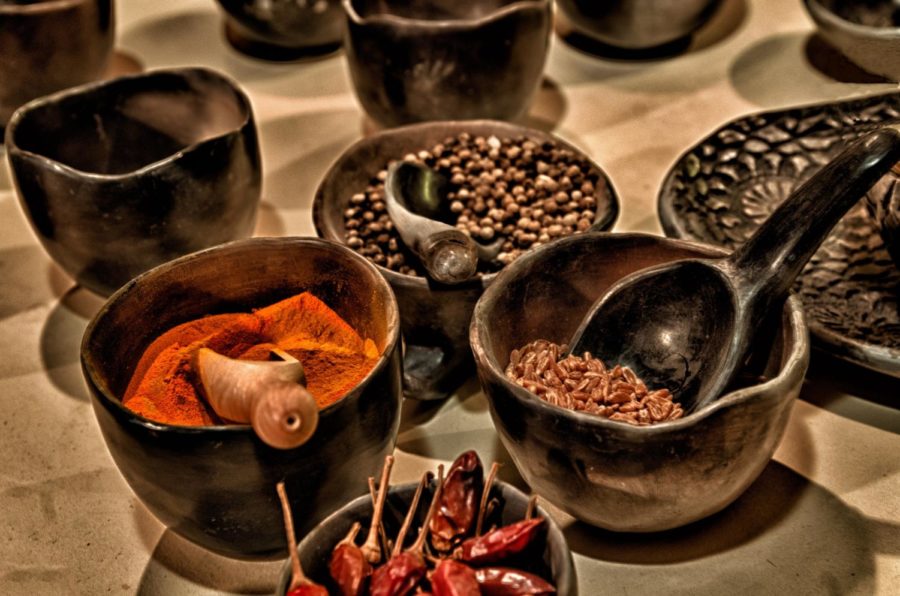An Extremely Brief History of Pumpkin Spice
Photo provided by: Creative Commons
Since the emergence of the latte from Starbucks, pumpkin spice has been on the rise.
November 2, 2018
The signing of the Declaration, Martin Luther King Jr’s “I have a Dream”, Kanye interrupting Taylor. All of these things have one thing in common, they remain iconic moments in American history, burned into the pages of our history books and remade into Broadway plays. Sadly one iconic element is overlooked, left out, ignored, even though we line store fronts for it. This piece of history is in every Americans’ favorite fall latte, every college students’ candle and pumped into limited edition M&Ms. This magical elixir of course being the ever present seasoning, pumpkin spice. The reigning supreme of fall, the uniting force in a divided nation. The nutmeg based spice wasn’t invented by a bored Starbucks executive, but instead was concocted several thousand years ago, in a surprisingly exciting history.
The spice actually just started as nutmeg. Nutmeg has been an ingredient for over 3,000 years. In the Bandu Islands of Indonesia archaeologists discovered nutmeg residue on a pot estimated to be over 3,500 years old. As centuries went on and the tribes in Indonesia continued mixing nutmeg, the global demand for spices was in full swing. Asia was trading with North Africa and the Middle East. In turn, Europe got a piece of the spice pie. Nutmeg grew to be an incredibly valuable spice, so much so that in the 1300s’ the Bandu Islands became known as the “Spice Islands.” The most ignored spice in the rack in your pantry was once a luxury, rumored to cost as much as an oxen. When Europe came in contact with the Americas the demand for nutmeg only grew, and by the 1600’s it was a favorite of the Dutch, British, and the tea-throwing colonists in North America. The actual blend of “pumpkin pie spice” wasn’t mentioned until much later, in a Washington Post recipe dating back to 1936.
Pumpkin spice is a mix of nutmeg, cinnamon, ginger, cloves and allspice, and is essentially the same mix as Pumpkin Pie Spice. In early recipes featuring the spice , such as Spice of Cake and pumpkin soups, one key element is constant: they all contained real pumpkin, a squash once considered only usual to “Italian peasants.” This did not last long and Pumpkin Spice truly became an American icon after the diabolical geniuses at McCormick and other spice companies bottled it up without using pumpkin, saving lazy cooks everywhere and soon phasing out the use of real, fresh pumpkin in recipes. Then finally, in the mid-90s, the last autumnal spice wave. A coffee house in Tampa, Florida began to sell “pumpkin coffee beans.” Las Vegas, Allentown, and Albany followed soon after. They were all hits, only growing coffee house culture even more among young Americans. Then, in the faithful year of 2004, the Converse-wearing overlords at Starbucks released a new seasonal latte, the PSL. From Indonesian tribes to the inside of a suburban Target, the comforting, overrated, and all too familiar spice has injected itself permanently into American culture.
Pumpkin spice has survived the Recession and been held in nearly every confident teenagers’ hands as they walked in late to class. Pumpkin Spice, sure is highly debated, but everyone has a favorite form of it. Democracy, liberty, and freedom have allowed pumpkin Oreos, waffles, scented socks, and ice cream fill our hearts, and stomachs for over a decade. So as you take down your Halloween decorations and throw out your rotten Jack-O-Lanterns, know that you are drinking pure history.






